Ever wonder what it would be like to literally walk in someone else’s shoes? Body swap stories have exploded in popularity across digital platforms, with interactive fiction sites hosting thousands of user-generated narratives exploring what happens when people switch places. I remember discovering my first body swap story as a teenager – it completely changed how I thought about empathy and perspective. These stories make you stop and think – wait, what actually makes me… me? From classic films to cutting-edge digital narratives, body swap stories offer unique insights into human nature and the stuff we usually take for granted.
Source: Writing.com Interactive Stories Database

Table of Contents
-
How to Choose the Perfect Body Swap Story for You
-
Classic Literature and Film Adaptations (Stories 1-5)
-
Interactive Fiction and Digital Stories (Stories 6-9)
-
Science Fiction and Fantasy (Stories 10-13)
-
Romance and Relationship Stories (Stories 14-17)
-
Social Commentary and Drama (Stories 18-21)
-
Horror and Psychological Thrillers (Stories 22-25)
-
Deep Dive Analysis: What Makes These Stories Work
-
Rating System: How We Evaluated Each Story
-
Transform Your Own Body Swap Ideas Into Stories
TL;DR
-
Body swap stories range from lighthearted family comedies to mind-bending explorations of consciousness and identity
-
Interactive fiction lets you make choices that actually affect how the body swap plays out
-
The best ones use switching places to explore real stuff like empathy, privilege, gender roles, and social inequality
-
Good execution means believable consequences, distinct character voices, and plots that actually make sense
-
Different types serve different purposes – some are pure entertainment, others are serious social commentary or psychological horror
-
Modern body swap stories tackle complex themes like digital consciousness transfer and what identity even means anymore
How to Choose the Perfect Body Swap Story for You
Picking the right body swap story depends on what you’re in the mood for. Want something light after a tough day? Family-friendly comedies are perfect. Craving something that’ll make you think? Science fiction explorations of consciousness will blow your mind. Looking to understand social issues better? Stories about privilege and inequality pack a serious punch.
Think about whether you want comedy or drama, traditional stories or interactive ones where you make the choices, temporary swaps or permanent life changes. The best body swap stories also have believable consequences – characters don’t just magically know how to navigate their new lives.
Your mood matters a lot here. I’ve got friends who swear by body swap comedies when they’re stressed because there’s something comforting about watching characters figure out someone else’s problems for a change. But when they want to dig deeper, they go for the stories that tackle privilege or identity questions.
When exploring different ways stories can be told, consider how 25 story theme examples can enhance body swap premises with deeper meaning that sticks with you long after you’ve finished reading.
|
Story Type |
Best For |
Key Themes |
Reading Time |
Complexity Level |
|---|---|---|---|---|
|
Family Comedy |
Light entertainment, all ages |
Understanding, growth, humor |
1-2 hours |
Low |
|
Interactive Fiction |
Personalized experience |
Choice consequences, multiple outcomes |
2-4 hours |
Medium |
|
Sci-Fi/Fantasy |
Intellectual exploration |
Technology, consciousness, identity |
3-6 hours |
High |
|
Social Commentary |
Awareness building |
Privilege, inequality, empathy |
2-4 hours |
Medium-High |
|
Psychological Horror |
Thrill seekers |
Identity loss, control, fear |
1-3 hours |
High |
Genre and tone make a huge difference. Comedy-focused stories are all about the awkward misunderstandings and funny situations, while dramatic ones dive deep into identity questions and what it really means to understand someone else. Some nail both approaches.
Finding Your Match: My friend Sarah wanted something light for her commute, so she went with “Freaky Friday” adaptations for their humor and happy endings. Meanwhile, Alex was studying philosophy and preferred sci-fi body swap stories that explored consciousness and identity – the kind of stuff that tied into his coursework.
Who the story’s written for matters too. Family-friendly options explore universal themes about understanding others, while mature stories tackle complex issues like gender identity, social inequality, and existential questions about consciousness that might go over kids’ heads.
Some people love traditional linear stories because they’re comfortable and predictable. Others prefer interactive fiction where your choices actually matter and create a personalized experience. And there’s the question of temporary versus permanent swaps – do you want clear resolution or are you okay with characters having to completely rebuild their lives?
The deeper meaning separates entertainment from literature that actually sticks with you. Simple stories use body swapping just for fun scenarios without much substance. The profound ones examine privilege, identity, gender roles, and social consciousness in ways that make you think differently about the world.
Character development quality is what separates great stories from forgettable ones. Look for stories where the swap actually changes people rather than just creating funny situations. The best characters come out different – better – from their experience in someone else’s life.
Good execution shows in the details. Well-crafted stories think about the practical stuff – how does someone navigate unfamiliar social situations? What emotional challenges come up? How do relationships change? Poor execution glosses over these logical considerations, while quality stories dig into them.

Classic Literature and Film Adaptations
These are the stories that started it all – the ones your parents probably watched and you definitely should too. They’re like comfort food but for your brain, tackling big family stuff and growing up without making you feel like you’re in therapy.
1. Freaky Friday (Multiple Adaptations)
Look, if you haven’t seen at least one version of this, you’re missing out. Mom and daughter swap bodies through some magical fortune cookie situation (honestly, the how doesn’t matter as much as the why). Suddenly mom’s dealing with mean girls and pop quizzes while her daughter is trying to plan a wedding and not mess up her mom’s career.
What makes this work? It’s every family argument you’ve ever had, but with actual proof of who’s right. Mom finally gets why high school is genuinely stressful, and the daughter realizes her mom isn’t just being dramatic about work stuff.
I’ve watched this with friends who swore their parents “just didn’t get it” – by the end, they’re usually texting their moms. It’s that kind of movie.
Multiple versions have updated the story for different eras, but the core remains powerful. The 24-hour time limit creates urgency, while the wedding deadline adds real stakes. Resolution comes through mutual understanding rather than magic alone.
2. The Change-Up (Film/Novel)
This one’s definitely not for family movie night (seriously, it’s R-rated for a reason). Two best friends – one’s the responsible dad, the other’s the eternal bachelor – make a drunk wish and boom, body swap time.
The married guy thinks his single friend has it made, and the bachelor thinks family life looks pretty sweet. Spoiler alert: they’re both wrong, but in the best way possible. It’s like that grass-is-greener thing we all do, except they actually get to test it out.
Fair warning: it gets pretty crude, but underneath all the raunchy humor, it’s actually about appreciating what you’ve got and realizing your friends’ lives aren’t as perfect as they look on social media. Both men realize they’ve been idealizing each other’s situations while ignoring their own blessings.
3. 13 Going on 30 (Film/Novel)
Jennifer Garner being adorable while playing a 13-year-old in a 30-year-old’s body? Yes, please. Little Jenna wishes to skip all the awkward teenage stuff and wake up as a successful adult. Plot twist: adult Jenna is kind of terrible.
This one hits different because we’ve all had those “I can’t wait to grow up” moments. But Jenna discovers that in becoming everything she thought she wanted, she lost everything that actually mattered – like her best friend and her authentic self.
It’s basically a cautionary tale about not rushing through life, wrapped up in early 2000s fashion and a killer soundtrack. Plus, who doesn’t love a good “Thriller” dance sequence? The time displacement adds complexity beyond simple body swapping – Jenna must navigate an unfamiliar world where she’s missed crucial life experiences.
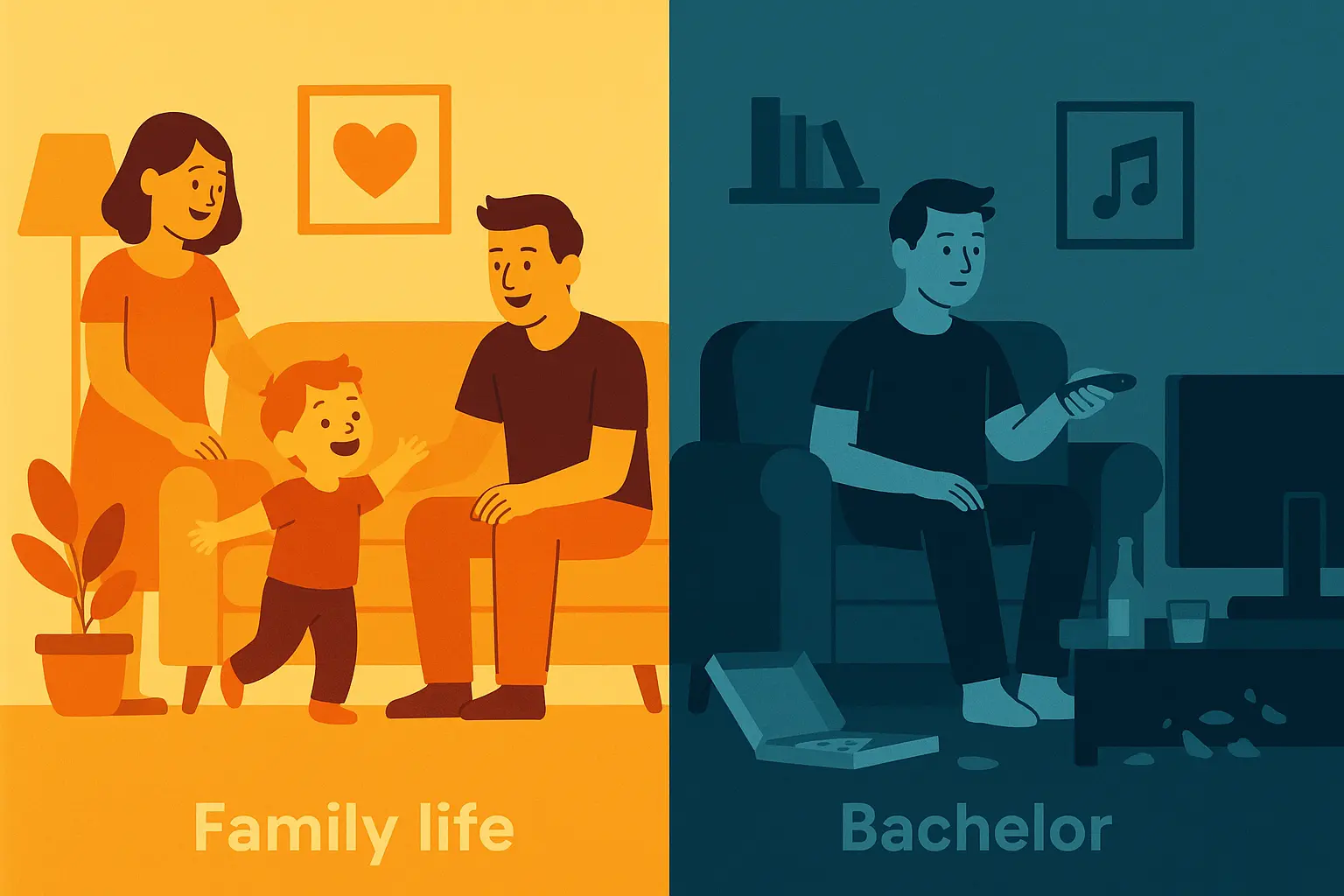
4. Big (Film/Novel)
Tom Hanks playing a 12-year-old boy in a man’s body is exactly as charming as it sounds. Josh makes a wish at a carnival (classic mistake) and wakes up adult-sized but still kid-minded.
The genius of this story is watching a child navigate the adult world with zero cynicism. He brings joy back to a corporate job, plays giant piano keyboards in toy stores, and reminds everyone what it’s like to find genuine wonder in simple things.
The romance subplot gets a little weird when you think about it too hard (because, you know, he’s actually 12), but the movie handles it better than you’d expect. It’s really about not losing that spark of childhood excitement as you grow up.
5. The Hot Chick (Comedy)
Okay, this one’s… a lot. Rob Schneider and Rachel McAdams swap bodies through cursed earrings (because why not?). A criminal ends up in a teenage girl’s body while she’s stuck in his.
It’s not winning any awards for subtlety, but it does poke at how differently society treats people based on how they look. Plus, watching Rob Schneider try to navigate teenage girl social dynamics is pretty entertaining if you’re in the mood for some mindless comedy.
The criminal angle adds some actual stakes – it’s not just about learning life lessons, there’s real danger involved. Sometimes you want your body swap stories with a side of car chases.
Interactive Fiction and Digital Stories
This is where things get really cool. Instead of just watching characters make choices, you get to make them yourself. It’s like those “Choose Your Own Adventure” books you probably read as a kid, but way more sophisticated and dealing with much more complex stuff.
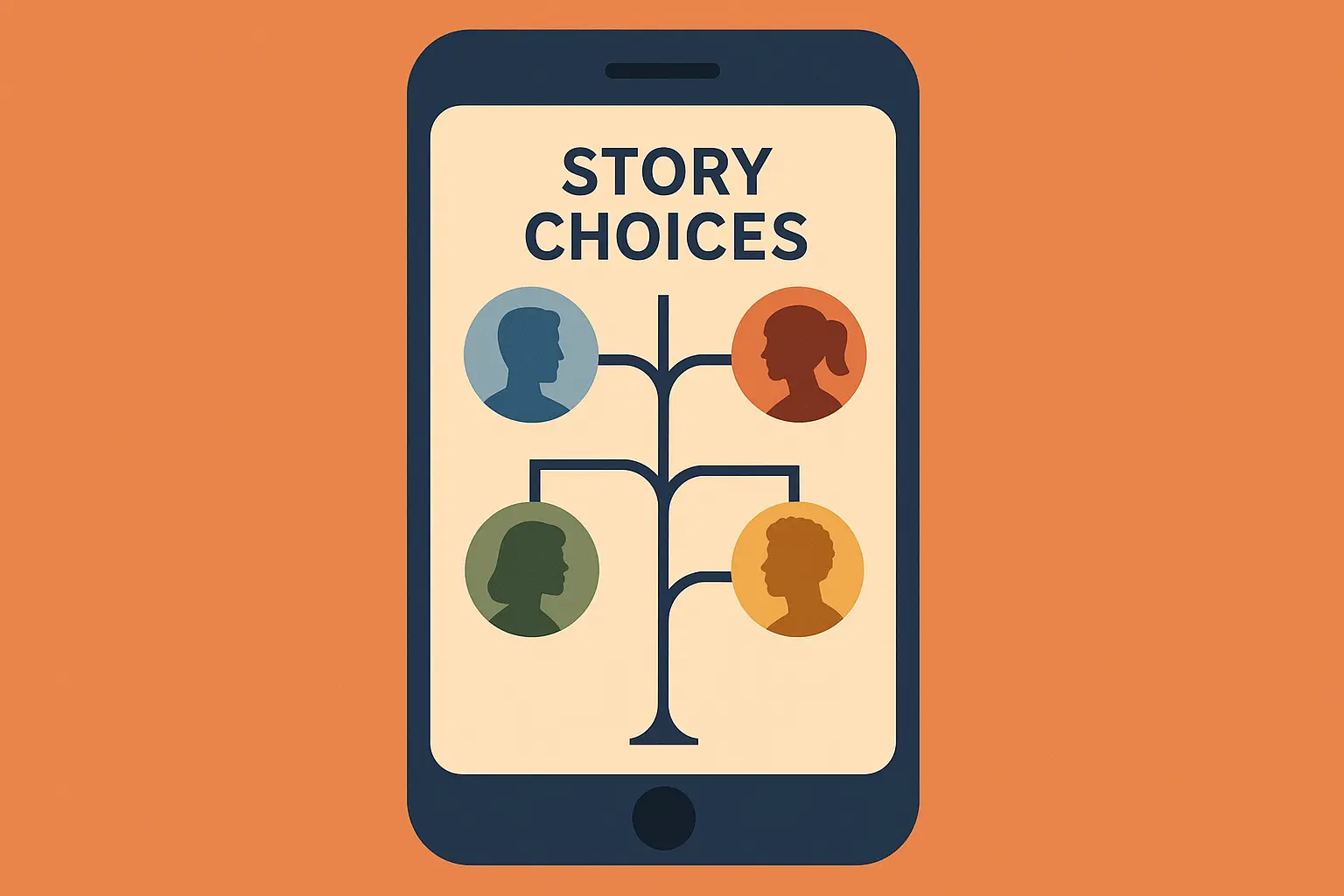
6. Body Swap Interactive: The Office Edition
Ever wondered what it would be like to be your boss for a day? Or have your boss walk in your shoes? This interactive story lets you find out, and let me tell you, it’s eye-opening.
You might swap with your micromanaging supervisor and discover they’re dealing with impossible deadlines from higher-ups. Or switch with that coworker who always seems to have it easy and realize they’re handling way more than you thought.
The cool thing about the interactive format is that your choices actually matter. Handle that difficult client meeting with grace? Your relationships improve. Completely bomb that presentation? Well, that’s a learning experience too.
One path I tried had me swapping with the office intern – turns out being treated like you don’t know anything gets old really fast, even when you’re getting paid to learn. Multiple branching paths explore various office dynamics, and your choices affect relationships, career advancement, and problem-solving approaches.
The complexity of managing multiple character perspectives mirrors techniques found in 25 first person story examples where maintaining authentic voice becomes crucial to narrative success.
7. Identity Crisis: A Choose Your Own Adventure
This one doesn’t mess around. You’re swapping between different social classes and economic situations, and your choices determine how well you navigate each world.
Go from wealthy to struggling financially? Good luck figuring out public transportation, food stamps, and why that medical bill is suddenly terrifying. Switch from poverty to privilege? Try not to accidentally reveal how little you understand about “normal” problems.
I remember one decision point where my character (originally well-off, now in someone poor) needed medical care. The options were brutal: wait hours in the ER without insurance, commit insurance fraud, or try to find community resources you’ve never needed before. Each choice taught me something new about healthcare access.
Interactive Decision Point: In “Identity Crisis,” readers face a choice when their wealthy character (in a poor person’s body) needs medical care. Option A: Go to the emergency room and wait hours without insurance. Option B: Try to use their original identity’s insurance illegally. Option C: Seek help from community resources. Each choice leads to different consequences and insights about healthcare access.
8. The Swap App Chronicles
Imagine if there was an app for body swapping (terrifying thought, honestly). This series explores different scenarios – maybe you swap with someone from a completely different culture, or someone in a job you’ve always been curious about.
Each episode is like a mini-experiment in empathy. The app concept makes it feel modern and relatable – we’re all used to our phones changing our lives, so why not this?
What I love about the serialized format is that characters grow across multiple swaps. It’s not just one-and-done learning experiences; people build on what they’ve learned and face new challenges with that knowledge. Episodes might involve swapping with someone from a different culture, profession, or life stage, with your decisions shaping how characters adapt and what they learn.
9. Mirror, Mirror: Interactive Body Swap Mystery
Mystery plus body swap equals my new favorite thing. You’re trying to solve crimes while also figuring out how to function in someone else’s body and social situation.
Maybe you’re a detective who swaps with a suspect, or a witness who ends up in the criminal’s body. Your investigation skills have to adapt to your new circumstances – good luck getting people to take you seriously if you’re suddenly in the body of someone with a criminal record.
The mystery element keeps you engaged while the body swap stuff makes you think about privilege and assumptions. Plus, sometimes the swap itself is connected to the crime, which adds this whole extra layer of “what the heck is going on?” Multiple suspects and red herrings create complex narratives where your body swap perspective provides unique insights that traditional detectives might miss.
Science Fiction and Fantasy
Now we’re getting into the really wild stuff. These stories don’t just hand-wave the body swapping with “magic happens” – they dive deep into how it might actually work and what it would mean for society, consciousness, and what makes us human.
10. The Transfer Protocol
Set in 2045, this story imagines a world where we can actually transfer consciousness between bodies. A doctor accidentally swaps with a death row inmate, and suddenly we’re asking some really heavy questions.
Should the inmate be executed while in the doctor’s body? Is the doctor responsible for crimes committed by someone else’s mind? These aren’t just thought experiments – they’re the kind of ethical dilemmas we might actually face someday.
The science feels believable enough that you start wondering if this could really happen. And then you start wondering if you’d want it to. Technical aspects receive detailed attention – how does consciousness transfer work? What are the risks and limitations? The story grounds fantastical concepts in believable scientific speculation while exploring social implications.
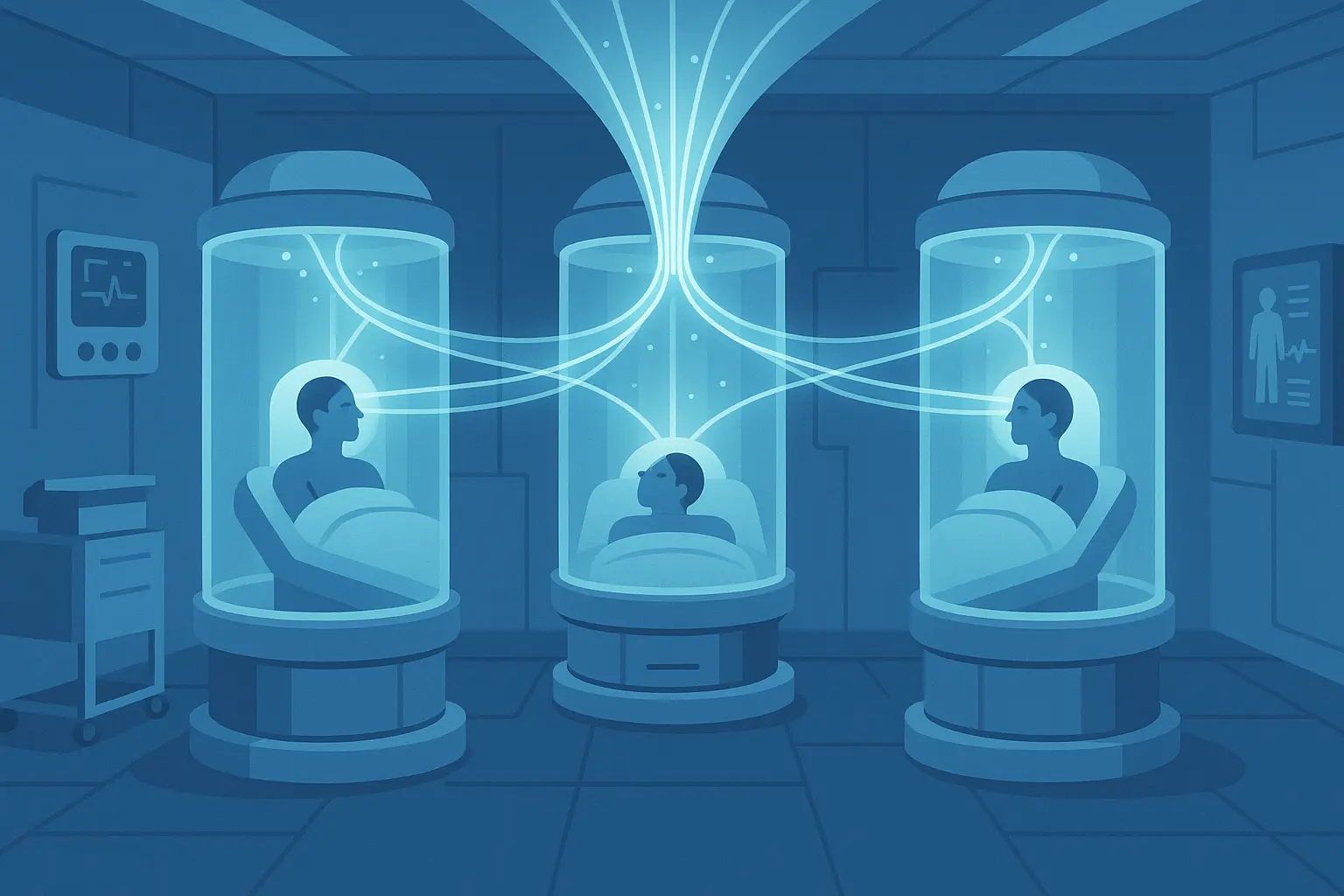
11. Quantum Entangled
Two people across parallel dimensions swap bodies, experiencing alternate versions of their own lives. It’s body swapping meets “What if I’d made different choices?”
The parallel universe thing adds this extra layer of “what if” that hits really hard. You’re not just experiencing someone else’s life – you’re experiencing the life you might have had if you’d taken that job, moved to that city, or asked out that person.
Small differences between universes create these butterfly effects that make you think about how much control we actually have over our lives. It’s like sliding doors, but with consciousness swapping. Dimensional differences might be subtle – different career choices, relationship outcomes, or historical events. Characters must navigate unfamiliar worlds while trying to return to their original dimensions.
12. The Shapeshifter’s Dilemma
Fantasy setting where magical body swapping reveals whether your soul is really connected to your physical form. Do you stay “you” if you’re in a completely different body?
The magical framework lets the story explore spiritual questions without getting bogged down in scientific explanations. Are we our bodies? Our memories? Our souls? When magic is involved, these questions become plot points instead of just philosophy.
Different magical swap methods come with different rules and consequences, which keeps things interesting. A curse works differently than a spell, which works differently than divine intervention. Fantasy elements allow for creative swap mechanisms – enchanted objects, spells, curses, or divine intervention. Each method carries different rules, limitations, and consequences that drive plot development.
13. Neural Link
Cyberpunk meets body swap when brain-computer interfaces malfunction and cause involuntary consciousness exchanges. Suddenly your neural implants aren’t enhancing your life – they’re putting you at risk of losing it entirely.
The corporate conspiracy angle adds thriller elements while exploring how technology might be used to control or exploit people. What happens when the tools designed to help us become weapons against us?
It’s the kind of story that makes you think twice about that smart watch tracking your heart rate. The cyberpunk setting explores how technology shapes human identity. Neural implants that enhance cognition or connect minds create vulnerabilities that criminals or corporations might exploit. Body swapping becomes a form of digital assault.
Romance and Relationship Stories
These stories use body swapping to explore the age-old question: do you love someone for their body, their mind, or something deeper? Spoiler alert: it’s usually more complicated than any of us want to admit.
|
Romance Subgenre |
Common Conflicts |
Resolution Themes |
Typical Duration |
|---|---|---|---|
|
Cross-Cultural Romance |
Family expectations, language barriers, traditions |
Cultural appreciation, compromise |
Temporary (days-weeks) |
|
Second Chance Romance |
Past misunderstandings, changed circumstances |
Forgiveness, growth, communication |
Brief (24-48 hours) |
|
Opposites Attract |
Surface incompatibility, different lifestyles |
Shared values, deeper connection |
Medium (weeks) |
|
Wedding/Commitment Stories |
Relationship readiness, family dynamics |
True partnership, understanding |
Very brief (hours-day) |
14. Love in Translation
Two people from different cultural backgrounds swap bodies and suddenly have to navigate each other’s family expectations, language barriers, and social norms. Try explaining to your partner’s traditional grandmother why you’re acting so weird, when you can barely speak the language.
The cultural elements make this more than just a romance – it’s like a crash course in empathy. You’re learning about food you’ve never tried, customs you don’t understand, and family dynamics that are completely foreign to your own experience.
One story I read had a character dealing with arranged marriage expectations while in their partner’s body. Talk about pressure. The story explores how culture shapes identity and relationships. Food, clothing, social interactions, and family roles all differ between cultures. Characters develop empathy for their partner’s navigation of cultural expectations and potential conflicts.
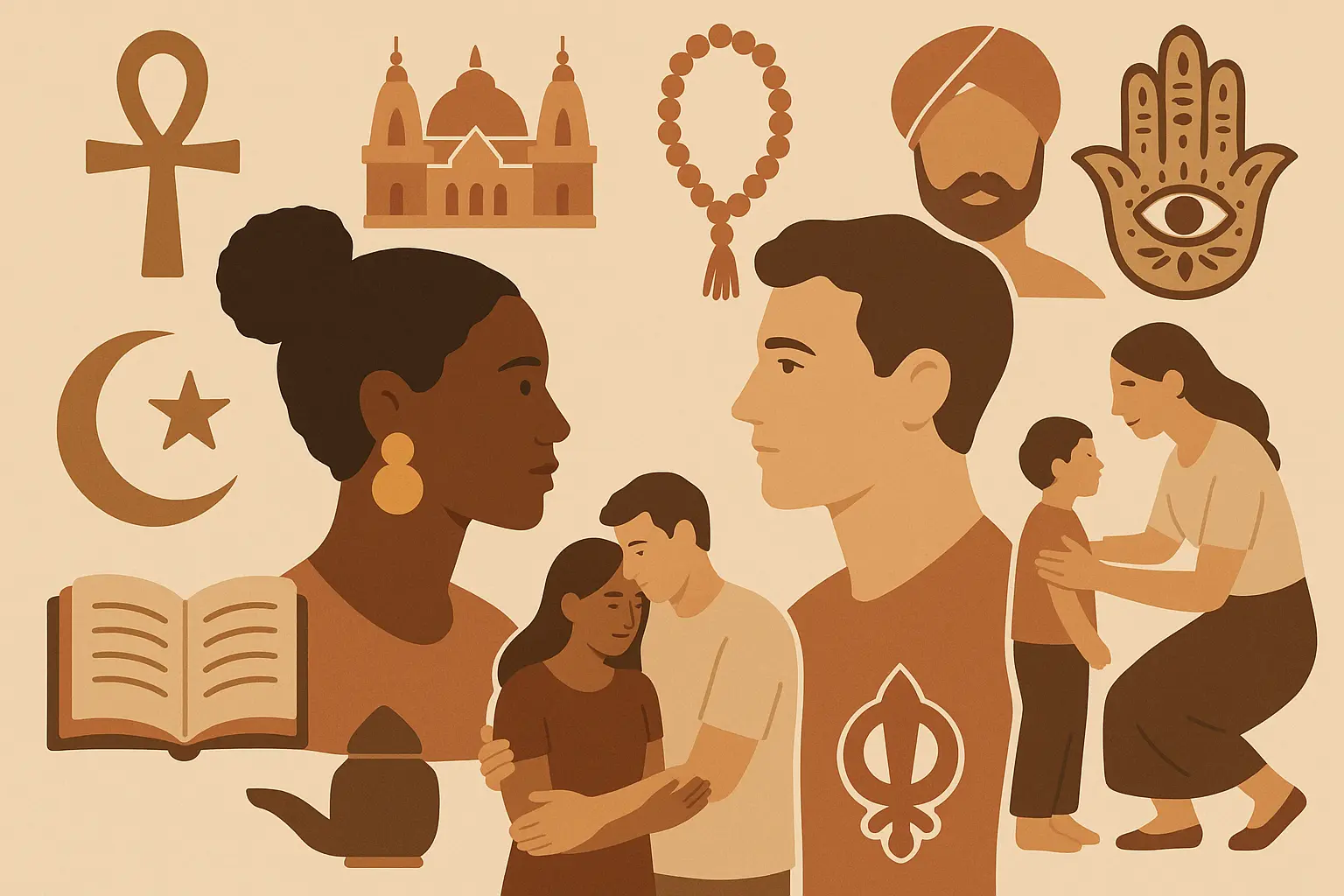
15. The Perfect Match
Two people who seem totally incompatible swap bodies and discover they actually have way more in common than they thought. It’s like when you finally talk to that person you assumed you had nothing in common with and realize you’ve been judging a book by its cover.
The growth comes from recognizing your own prejudices. Both characters realize they were making assumptions based on surface-level stuff while missing the deeper compatibility that actually matters.
Initial incompatibility might stem from different social classes, interests, personalities, or life goals. The swap reveals shared values, fears, dreams, or experiences that weren’t apparent from external observation. Character growth comes through recognizing their own prejudices and assumptions.
16. Second Chances
Ex-lovers swap bodies years after their breakup, finally seeing their past relationship from the other person’s perspective. All those fights that seemed so clear-cut suddenly become complicated when you understand what your ex was actually going through.
It’s relationship therapy through body swapping. You discover the sacrifices they made that you never noticed, the struggles they hid, the feelings they couldn’t express. Sometimes it leads to reconciliation, sometimes to closure, and sometimes to confirmation that breaking up was the right call.
Timing adds complexity – both characters have changed since their breakup. They must reconcile their past relationship understanding with their current selves and circumstances. The swap might offer closure, reconciliation, or confirmation that separation was correct.
17. The Wedding Swap
Bride and groom swap bodies on their wedding day. If that’s not a test of whether you really know your partner, I don’t know what is.
Imagine trying to get through wedding preparations, family interactions, and the ceremony itself while pretending to be someone else. Can you fake your way through conversations with their relatives? Do you know their inside jokes, their fears, their relationships well enough to pull this off?
It’s the ultimate “do you really know this person well enough to marry them” scenario. Wedding day timing creates maximum stakes and comedy potential. Characters must navigate ceremony preparations, family interactions, and wedding traditions while inhabiting their partner’s body and social role.
Social Commentary and Drama
These are the stories that don’t just entertain – they make you uncomfortable in the best possible way. They use body swapping to shine a light on social issues that are hard to see from your own perspective.
18. Walking in Their Shoes
Rich executive swaps with a homeless person. It’s exactly as eye-opening as you’d expect, and probably more uncomfortable than you’re prepared for.
The executive discovers that being homeless isn’t about being lazy or making bad choices – it’s about systemic barriers and having zero safety net. Meanwhile, the homeless person learns that wealth comes with its own pressures and responsibilities.
But the real impact comes from the details. How do you find food when you have no money? How do you stay safe when you have no shelter? How do you navigate business meetings when everyone expects you to know things you’ve never had to learn?
Practical details drive the narrative’s impact. The story reveals how circumstances shape opportunities and choices. Both characters gain appreciation for their opposite’s daily reality while discovering that their assumptions were completely wrong.
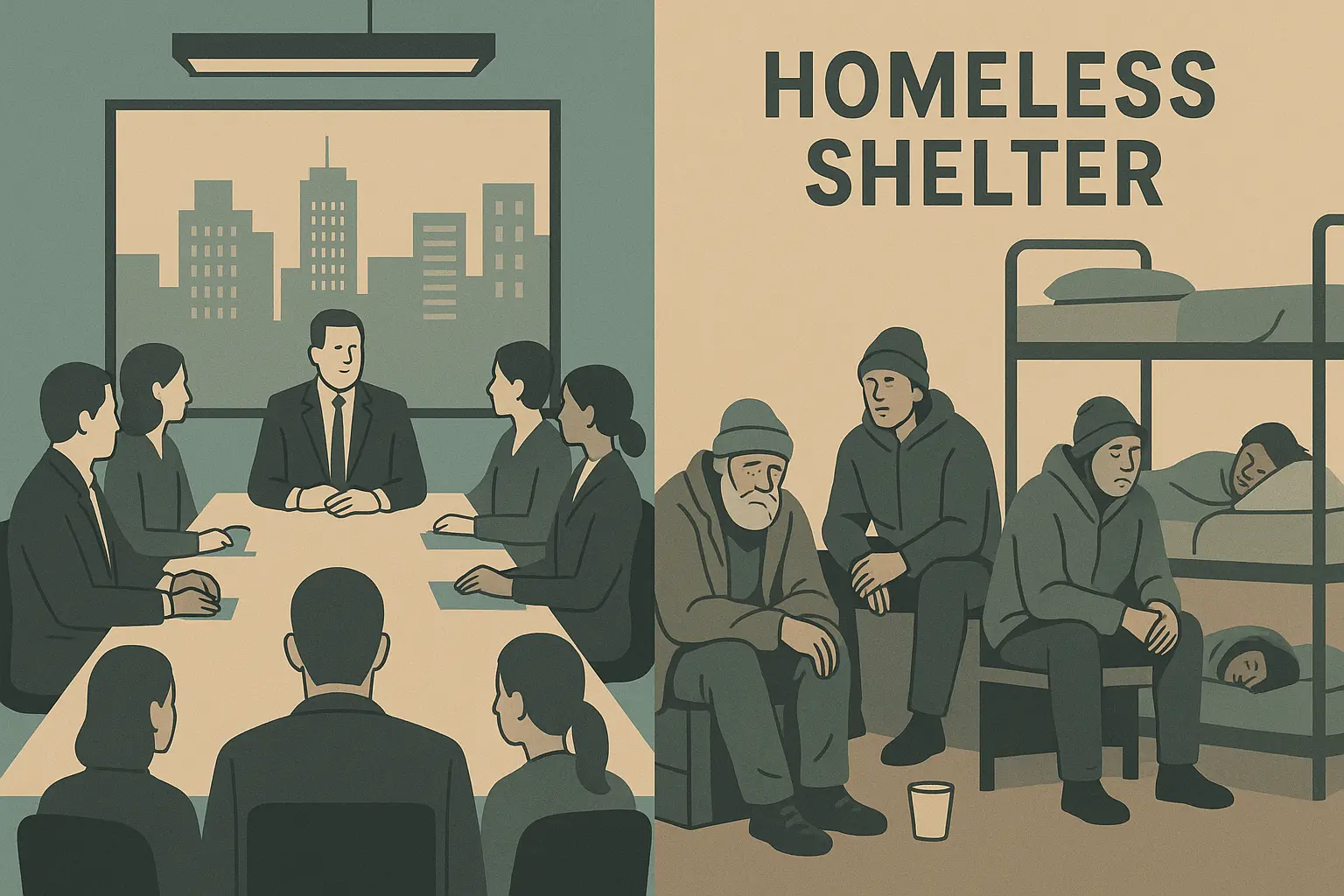
19. The Gender Gap
Men and women swap bodies and experience firsthand how differently society treats different genders. It’s not subtle, and it’s not supposed to be.
The workplace stuff hits hard – being interrupted in meetings, having your ideas credited to someone else, facing assumptions about your technical competence. Or on the flip side, suddenly being expected to be the primary breadwinner and dealing with the pressure of traditional masculine roles.
Safety concerns become real in ways they never were before. Walking alone at night, dealing with catcalling, navigating social situations where you’re suddenly seen as physically vulnerable or threatening.
Real-World Application: In “The Gender Gap,” when Marcus (in Sarah’s body) attends a business meeting, he experiences being interrupted, having his ideas credited to male colleagues, and facing assumptions about his technical competence. Meanwhile, Sarah (in Marcus’s body) discovers the pressure of being expected to be the primary breadwinner and the social freedom of walking alone at night without fear.
20. Generational Divide
Baby boomer swaps with Gen Z person. The technology gap is immediate and hilarious, but the deeper value differences are what make this story stick.
Watching someone try to navigate TikTok for the first time is funny. Watching them grapple with different approaches to work-life balance, social justice, and economic realities is enlightening.
Both generations realize they’ve been making assumptions about each other based on stereotypes rather than understanding the different worlds they grew up in. Technology differences create immediate challenges, but value differences drive deeper conflicts around work-life balance expectations, social justice priorities, economic perspectives, and relationship approaches.
21. The Color of Perspective
People of different races swap bodies, experiencing racism and privilege from the other side. It’s heavy, it’s necessary, and it’s handled through personal experience rather than abstract discussion.
Daily interactions reveal how much race affects everything – job interviews, shopping experiences, interactions with law enforcement, even simple social conversations. Assumptions about competence, character, and belonging become visible through contrast.
The story creates empathy through experience rather than explanation, which makes it more powerful than any lecture or discussion could be. Privilege becomes visible through contrast. Characters who never experienced discrimination suddenly face it, while those accustomed to bias experience life without it.
Horror and Psychological Thrillers
What happens when body swapping isn’t fun or enlightening, but absolutely terrifying? These stories explore the nightmare scenario where consciousness exchange becomes a violation rather than an adventure.

22. Trapped
Permanently stuck in someone else’s body with no way back. It’s every body swap story’s worst-case scenario, and it’s genuinely disturbing.
The horror isn’t jump scares or gore – it’s the slow realization that your old life is gone forever. How do you maintain your sanity when you look in the mirror and see a stranger? How do you explain to your family that you’re not who they think you are?
The psychological elements focus on grief – you’re literally mourning your own identity while trying to build a new one. Unlike comedic or dramatic swaps with clear resolution paths, this story offers no escape. Characters must rebuild their entire sense of self while grieving their lost identity.
The psychological terror elements draw inspiration from techniques used in spine-chilling horror stories where identity dissolution becomes the ultimate fear.
23. The Collector
A serial body-swapper who steals identities and lives, leaving victims trapped in unwanted forms. It’s identity theft taken to its absolute worst conclusion.
The thriller format builds tension through investigation – how do you catch someone who can look like anyone? How do you prove crimes that seem impossible?
Victims don’t just lose their appearance; they lose their relationships, careers, and entire lives while watching someone else live in their place. The collector doesn’t just steal financial information but entire lives – relationships, careers, and physical forms. Victims lose everything that defined them while watching someone else live their life.
24. Mind Prison
Characters trapped in an endless cycle of body swapping with no escape. Every time they think they’ve found a solution, they swap again.
The cyclical horror comes from false hope followed by despair. After enough swaps, characters can’t even remember their original identity. The story explores whether “you” can survive complete disconnection from physical form.
The cyclical nature creates psychological horror through repetition and false hope. Characters think they’ve found solutions or escape routes, only to swap again. The endless cycle drives them toward madness and despair. Reality becomes questionable as characters lose track of their original identity.
25. The Doppelganger Effect
Mass body swapping creates societal breakdown when no one knows who anyone really is. How do relationships, jobs, or legal systems function when identity becomes fluid?
The paranoia is suffocating – you can’t trust anyone’s claimed identity. Your spouse, friends, and family might be strangers wearing familiar faces. Human connection becomes impossible when you can’t trust anyone to be who they claim to be.
Multiple people begin swapping bodies simultaneously, creating chaos and paranoia as no one knows who they really are. Society breaks down when identity becomes fluid and unpredictable. The story explores civilization’s dependence on stable identity and the breakdown of trust that makes human connection impossible.
Deep Dive Analysis: What Makes These Stories Work
The best body swap stories aren’t just about the gimmick – they use it to explore something real about human nature or society. Here’s what separates the memorable ones from the forgettable ones:
Character Voices Stay Consistent: Good writers make sure each consciousness sounds different, even when they’re in the wrong body. You should be able to tell who’s talking even when they look completely different.
The Rules Make Sense: Whether it’s magic, technology, or something else, the story follows its own logic. If consciousness transfer works a certain way in chapter one, it shouldn’t work completely differently in chapter ten just because the plot needs it to.
There’s Actually a Point: The swap serves the story’s deeper themes rather than just being a cool concept. The best ones make you think about empathy, identity, privilege, or human connection long after you’ve finished reading.
Real Consequences: Characters don’t just magically know how to navigate their new bodies and social situations. There are awkward moments, mistakes, and genuine challenges that make the experience feel believable.
The stories that stick with you are the ones that use body swapping as a lens to examine something true about the human experience. They’re not just asking “what if you could swap bodies?” but “what would that teach you about yourself and others?”
Understanding character voice consistency becomes crucial, similar to challenges explored in how to write a story where maintaining authentic perspectives drives narrative success.
Logical consistency within established rules prevents reader confusion and maintains story credibility. Whether the mechanism is magical, technological, or supernatural, the story must follow its own internal logic. Consequences should feel realistic within the story’s framework.
Thematic depth separates memorable stories from forgettable entertainment. The best body swap narratives use their premise to explore universal human experiences – empathy, identity, privilege, relationships, or social dynamics. The swap becomes a vehicle for deeper understanding rather than just plot device.

Rating System: How We Evaluated Each Story
Our evaluation system looks at four key things that determine whether a body swap story is actually worth your time. Genre and tone assess how well stories balance entertainment with substance. How the story’s told evaluates complexity and innovation. Deeper meaning measures meaningful content beyond surface-level premise execution. Execution quality examines logical consistency, character development, and believable consequences.
|
Evaluation Criteria |
Weight |
Key Factors |
Score Range |
|---|---|---|---|
|
Genre and Tone |
25% |
Consistency, audience targeting, mood balance |
1-5 stars |
|
Narrative Structure |
25% |
Innovation, pacing, complexity handling |
1-5 stars |
|
Thematic Depth |
30% |
Meaningful exploration, social relevance, lasting impact |
1-5 stars |
|
Execution Quality |
20% |
Technical writing, character consistency, logic |
1-5 stars |
Genre and Tone (⭐⭐⭐⭐⭐)
Stories earn high ratings by successfully balancing their intended tone while delivering on what you expect from the genre. Family comedies should make you laugh while teaching lessons. Psychological thrillers must create genuine tension while exploring identity themes. The best stories work on multiple levels effectively.
How the Story’s Told (⭐⭐⭐⭐⭐)
Complex, innovative structures earn higher ratings than simple linear narratives. Interactive fiction that meaningfully incorporates reader choice scores well. Multi-perspective storytelling that enhances rather than confuses the narrative receives top marks. Traditional structures can still excel through exceptional execution.
Deeper Meaning (⭐⭐⭐⭐⭐)
Stories that use body swapping to explore meaningful themes about human nature, society, or relationships score highest. Surface-level entertainment without deeper meaning receives lower ratings. The best stories make you think about identity, empathy, or social issues long after finishing.
Execution Quality (⭐⭐⭐⭐⭐)
Technical excellence in writing, character development, and logical consistency determines execution scores. Stories must handle the practical implications of body swapping believably. Character voices should remain distinct while showing adaptation to new circumstances. Plot holes or inconsistencies reduce scores significantly.
Transform Your Own Body Swap Ideas Into Stories
Want to write your own body swap story? Here’s the thing – it’s trickier than it looks. You need to plan out your swap mechanism, develop authentic characters, and figure out what deeper message you want to explore. Whether you’re writing traditional fiction or interactive stories, success depends on distinct character voices, logical consequences, and meaningful themes that actually resonate with readers.
Start with your concept and rules. Will it be magical, technological, or supernatural? What triggers the swap? How long does it last? Can it be reversed? Having clear rules prevents plot holes and keeps readers engaged instead of confused.
Character development is where most people mess up. You need to understand how consciousness and personality interact with physical form. How do characters adapt to new bodies? What parts of identity stay the same? How do relationships change when appearance and voice are different? These questions drive authentic character growth.
Your deeper message elevates your story beyond just a cool premise. What do you actually want to explore? How does the body swap serve that theme? The strongest stories use their premise to examine universal human experiences that readers can relate to, regardless of the fantastical elements.
Voice consistency is the biggest challenge – you need to maintain distinct character personalities while showing how they adapt to new circumstances. Each character should sound unique regardless of which body they’re in, while also demonstrating how they adjust to unfamiliar physical and social situations.
Plot logic means considering practical stuff that many stories ignore. How do characters navigate unfamiliar social situations? What happens to their jobs, relationships, and responsibilities? Addressing these details creates believable stories that don’t rely on readers just accepting whatever happens.
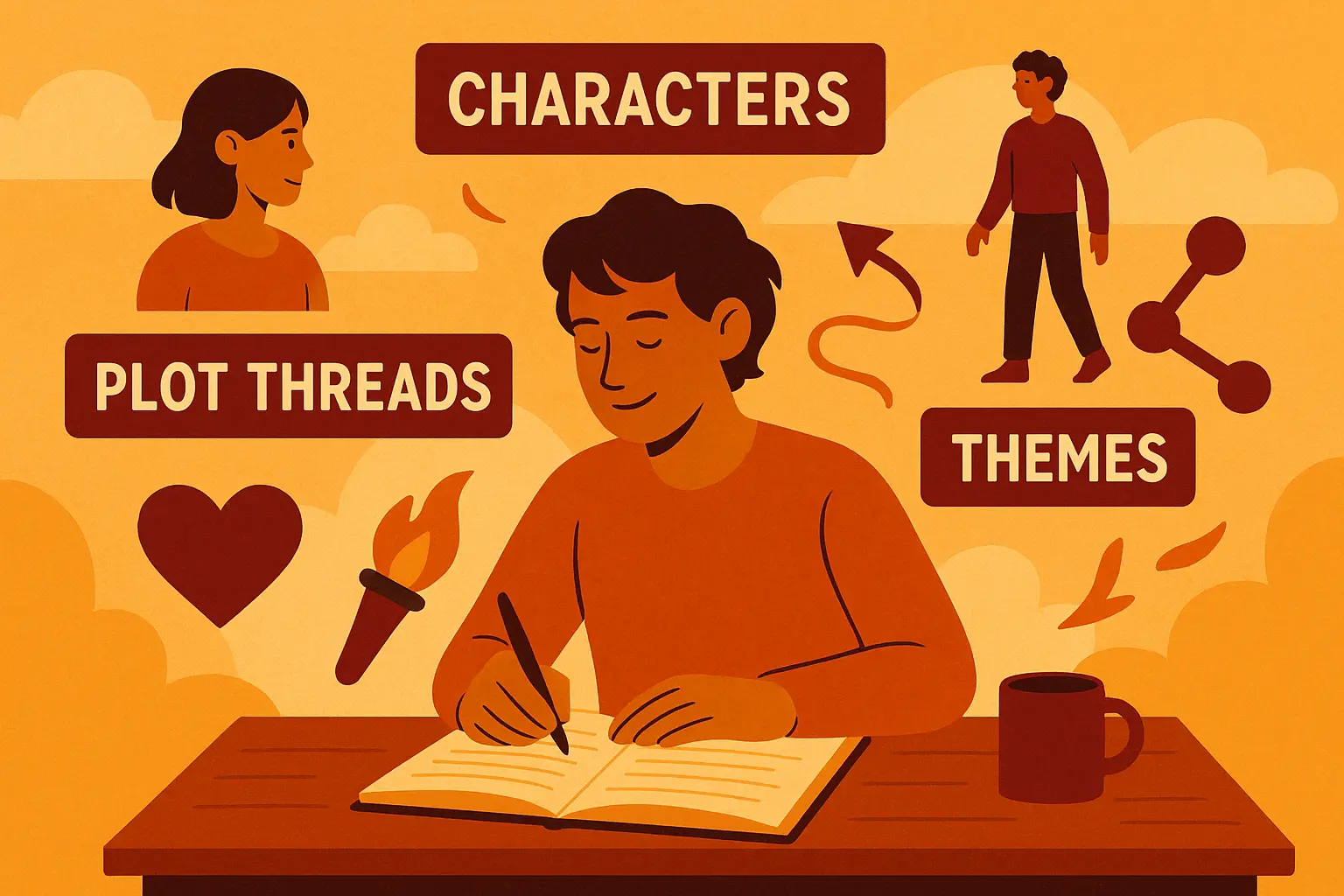
For writers looking to develop their concepts further, exploring 25 short story examples can provide structural insights that enhance body swap narratives with proven storytelling techniques.
Ready to bring your body swap vision to life? Nairrate’s AI-powered story generation tools can help you navigate the complex creative challenges of identity-swapping narratives. Our platform understands character voice consistency, helps develop authentic dialogue across multiple identities, and provides story prompts that spark compelling body swap scenarios.
Whether you’re crafting interactive fiction with branching choices or traditional linear narratives, Nairrate’s Story Starters Generator can provide opening lines that immediately establish your swap’s stakes and consequences. Our AI leverages genre-specific elements to maintain appropriate tone throughout your story, whether you’re writing comedy, drama, or psychological thriller.
Transform your body swap ideas into engaging stories that explore the deepest questions of identity and human connection. Start your free trial today and discover how our tools can support your creative journey from concept to completed narrative.
Final Thoughts
Body swap stories keep evolving as writers discover new ways to explore identity, empathy, and human connection through this versatile premise. From classic family comedies to cutting-edge interactive fiction, these stories offer unique insights into what makes us who we are.
The best body swap stories go way beyond their fantastical premise to examine real human experiences and social dynamics. They use the impossible situation of consciousness exchange to reveal possible truths about privilege, relationships, and personal growth that might otherwise stay hidden.
Whether you’re looking for entertainment, social commentary, or interactive experiences, body swap fiction has something for everyone. These 25 stories represent what the genre can do, from lighthearted escapism to profound philosophical exploration.
The future of body swap storytelling looks bright as technology enables new interactive formats and writers continue pushing boundaries. As our understanding of identity becomes more complex, these stories will likely evolve to reflect changing perspectives on consciousness, gender, and what it means to be human.
Honestly, who hasn’t wanted to swap lives with someone for just one day? These stories let us explore that fantasy while learning something real about ourselves and others. And let’s be real – after reading some of these, you might just text your mom to apologize for being a difficult teenager.



Add comment